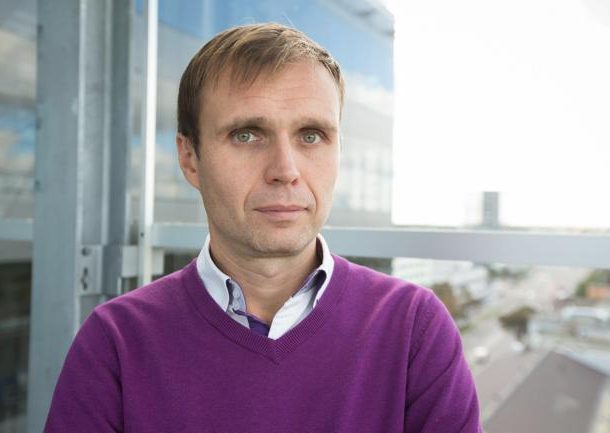Risto Rossar developed the first Internet platform for selling insurance policies. Searching for support on the Internet
Risto Rossar is an entrepreneur with fifteen years of experience. Will the latest project cash him a billion?
“This year, we need come to understand how to sell this software, where is our customer, what’s his kind and how do we address him. We are preparing ourselves to spend a lot of money on marketing,” says Risto Rossar. Indeed, marketing budget is the first to be administered in the circumstances of crisis. Recently, it appears, we been having entrepreneurs emerge in the Baltic States who do not deny the importance of marketing investment.
Risto Rossar (37) received his education in finance at the Estonian Business School, then he worked as an investment manager in a company called – Estonian Hoiupank which latterly known as IF (insurance firm). “Insurance firms usually have a lot of money and if in order to not lose it, money has to be invested. I was studying funds and the investment market.” In 2000 when the Internet was no longer a novelty for the banking industry this technology was not yet widespread in the insurance business, it was clear however that Internet was the future. Back then the first online stores and even social networks had already been established in Asia and the US. Risto Rossar with two of his friends found investors who could help develop the first platform for insurance policy sales. At that moment the experience he acquired at IF was more than enough to distinguish the necessities.

That is how IIZI was developed which is still in operation and is one of the largest online insurance brokers.
Since early beginning the Estonian IIZI has been operating across all three Baltic countries; In Latvia it was known as e-apdrosinasana.lv. In five years Risto Rossar had earned enough to buy out shares from investors in M&A(Mergers and Aquisitions). This was a right move – even though Risto is no longer actively managing IIZI he is still the owner and with earnings from IIZI he is maintaining his new business called Insly. IIZI last year had a turnover of six million and this company employs over 130 people.
Whereas Insly, the new company which offers cloud-based software for insurance brokers was established a year and a half ago by being practically separated from IIZI. At that moment Insly already had 60 customers in the Baltic States so saying that the company was created completely from scratch isn’t entirely accurate.
Insly is run by Risto himself and his company is now working independently from IIZI. The company headquarters are located in London as it is known as the Insurance Capital. There is also an office in the US and one representative in each – Latvia and Lithuania. About 20 people are working from Estonia- the land of Insly origin.
The program itself is not complex – it offers a variety of tools to better insurance policy sales and data analysis. Simple interface, cloud storage, useful financial management, automatic reporting, scheduling and analysis, simple customer communication – such is the description of the Insly platform. Price depends on the requirements; monthly subscription fee starts at 50 to 100 euros. The app is not new as the first version was developed by IIZI but over fifteen years it has been overwritten several times making it easier to use.
Insly has acquired 20 new customers since the launch. One third of the customers are from the USA, one or two are in Ukraine, Cyprus, Hong Kong and even in such exotic countries as Thailand, Lesotho, Rwanda and Honduras. But it’s no wonder that customers are mostly from the United States. When you search insurance brokerage programs on Google the first result is a summary post by the Washington’s Capterra. A database where you can find a hundred of Insly’s competitors but this company is recognized as the best. Although little has been heard about Capterra so far, it’s obviously part of Insly’s marketing which is primarily online marketing.
When asked how did they acquire customers in Rwanda or Honduras, Risto says that the program is currently only available in English and technical support is also being implemented in that language. And this also determines first markets. However, Honduras is not the first market. Insly’s customers in different countries have a unifying element – the so-called early adopters become customers. In the tech world users are conditionally divided into five groups; if you are in reach of the third category with your technology you can assume that you will earn a billion. The first group is the innovators –incorporating 2.5% of the population, innovators are first to start using the most recent technologies and they become the first customers of the beta versions. Next are early adopters, who do not particularly choose the betas but want to be one of the first to try out new things instead and also offer them to their customers. They make 13.5 percent in the world. There are also such groups as early majority (34%), late majority (34%) and laggards (16%) who are still using the first Nokia. If you manage to sell your new technology in the first sales year to one of the laggards, then it’s not only us who would be writing about it but also the Guinness Records.
Risto Rossar recognizes that marketing is the main point of challenge, therefore this year he plans on focusing mainly on marketing. Internet marketing is still considered to be a relatively new therefore companies have to invest a lot of money to be able to carry out experiments, target their audience and learn how to sell. “For the time being we do not have a clear vision of how to sell the product,” Risto admits. It is even more unclear how to sell insurance services that everyone has already bought from their usual brokers and every year they simply click the Extend policy button for another year. In the second year of operation the company Insley started with the goal of distributing its marketing opportunities and to reach the goal of acquiring at least 150 new clients. Turnover in the first year was half a million euros but this year’s planned revenue is one million. Profit is not on their minds yet but Risto is optimistic – if he reaches the target for this year he will consider himself lucky.
THIS IS A GOOD EXAMPLE OF HOW
Simple IT solutions can change the structure of the industry. It also shows that you can start something even in the early phase of technological development. In the first case we managed to reduce the role of mediators (brokers). In the second case we were strengthening skills of our existing brokers with an improved approach to get them to work with the particular platform. There’s ongoing changes in the insurance field that are affecting the sector as a whole, but the brokers are not bothered by it any more.
For example in the last few years the car insurance policies tend to condition the quotes depending on the driver’s behaviour. In order to measure it a device is installed into your car that captures driving speed and other types of behaviour.
With the emergence of smart watches and bands similar approaches are being implemented in the health insurance field– the quote will be affected by people’s habits. The countries are keeping up with these changes. In some countries it’s already forbidden to apply insurance quote differences among genders, a similar view goes for using genetic differences.



